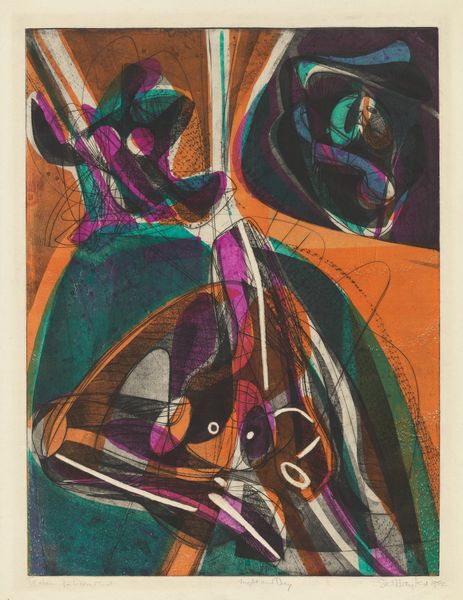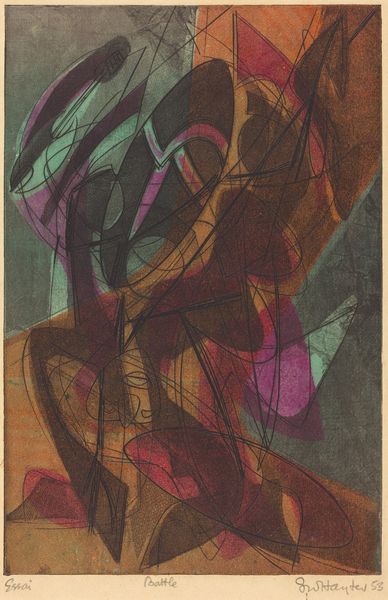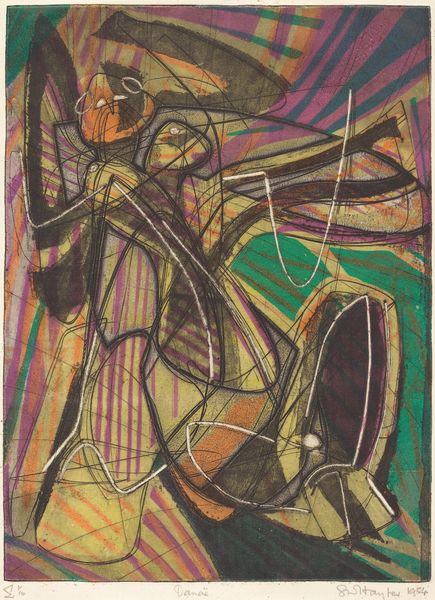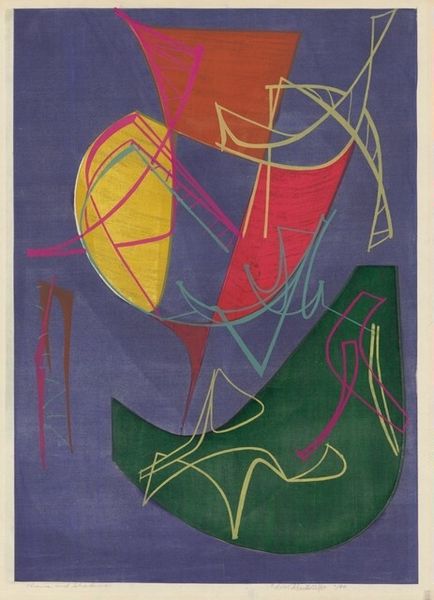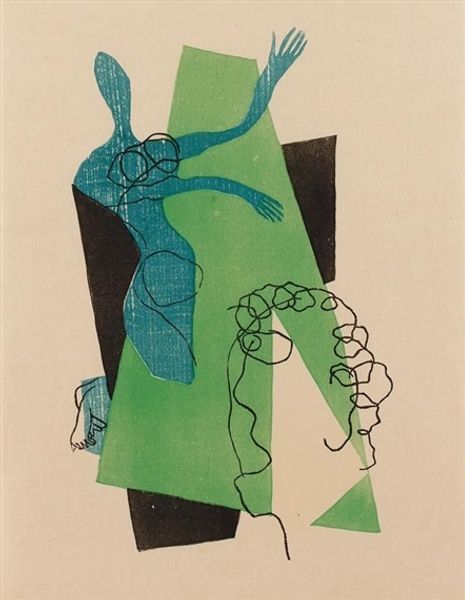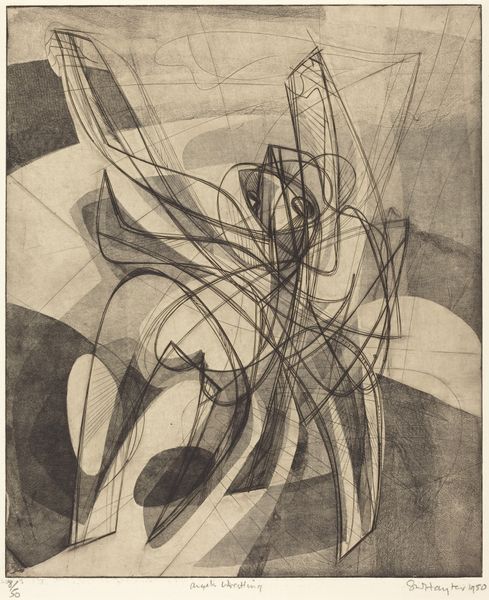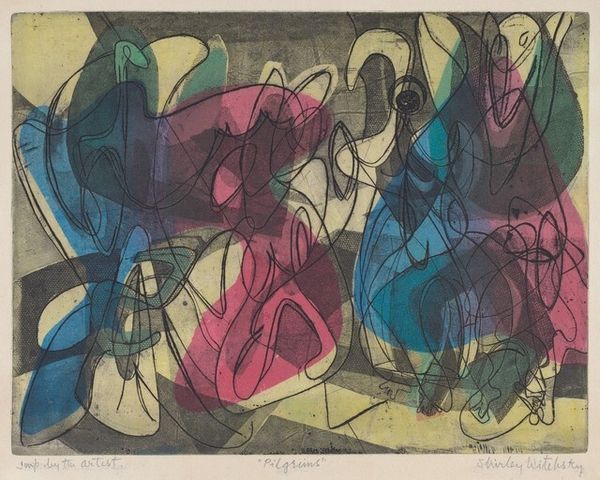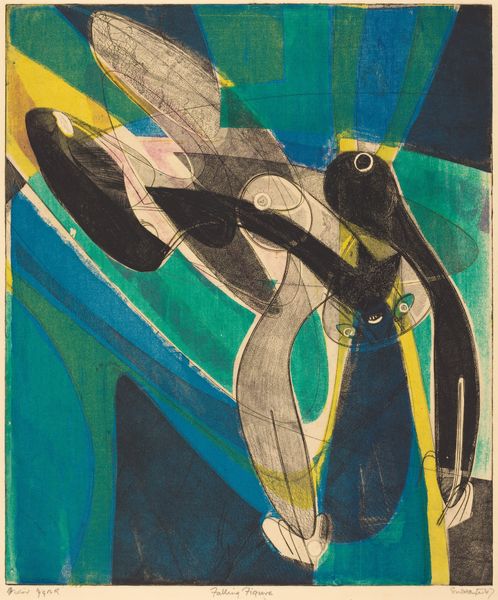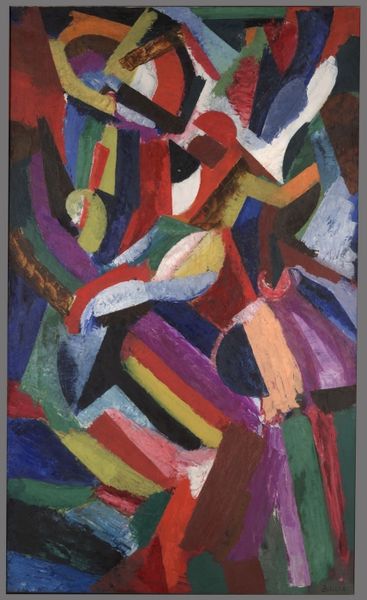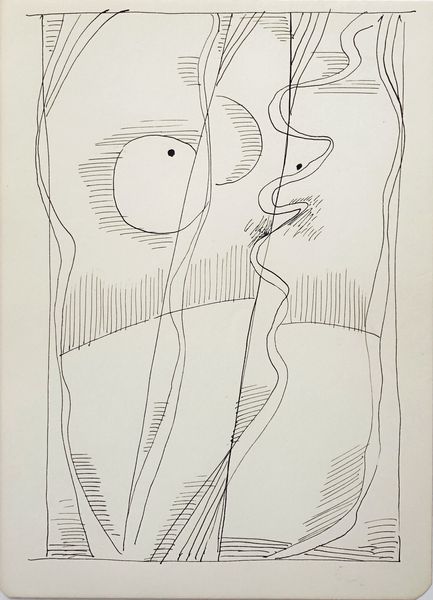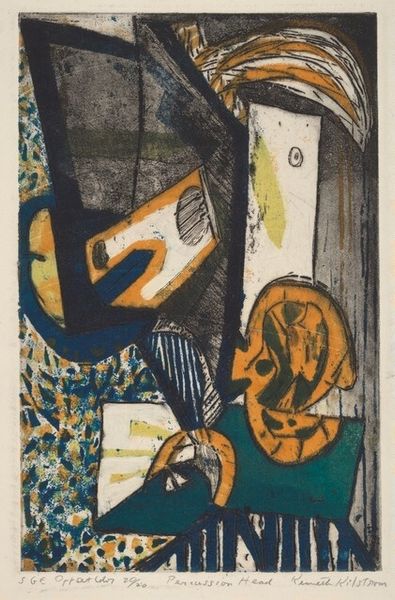
Dimensions: plate: 39.3 × 29.3 cm (15 1/2 × 11 9/16 in.)
Copyright: National Gallery of Art: CC0 1.0
Editor: Here we have Stanley William Hayter’s "La leçon d'anatomie," or "The Anatomy Lesson," created in 1954 using mixed media including etching and engraving. It feels... chaotic, yet the eye is drawn to those almost glyph-like white figures. What do you see in this piece from a historical perspective? Curator: Well, immediately, the title, invoking "anatomy," hints at a connection to the historical tradition of anatomical illustration, particularly popular in the Renaissance. However, Hayter throws that tradition into disarray. He was deeply engaged with Surrealism and automatic writing. Do you see how this print is far from a scientific diagram? It is instead a more freeform, visceral exploration of form and line, aligned to Art Informel. Editor: So it's playing with the idea of anatomical study, but through abstraction? Was this a reaction against something happening at the time? Curator: Exactly. Post-World War II, artists were grappling with ways to represent trauma and fragmentation. Abstraction provided a language that traditional figuration couldn't. Hayter, through his Atelier 17, played a key role in popularizing innovative printmaking techniques which supported this abstract expression. How does understanding this context influence your reading of the piece? Editor: It makes me think about the breakdown of the body, maybe as a metaphor for the societal wounds after the war, expressed through disjointed forms. Curator: Precisely. It’s a rejection of imposed order, embracing the chaotic nature of experience. Knowing this definitely gives the piece more gravitas, I think. Editor: Definitely. Thanks for illuminating that context. I see the piece completely differently now.
Comments
No comments
Be the first to comment and join the conversation on the ultimate creative platform.
